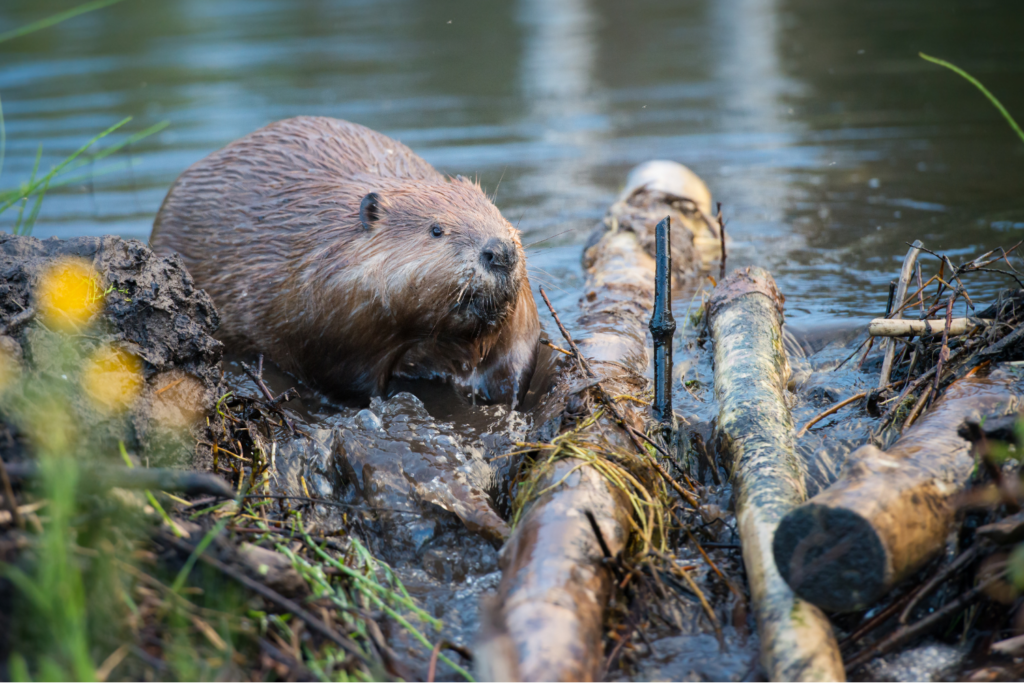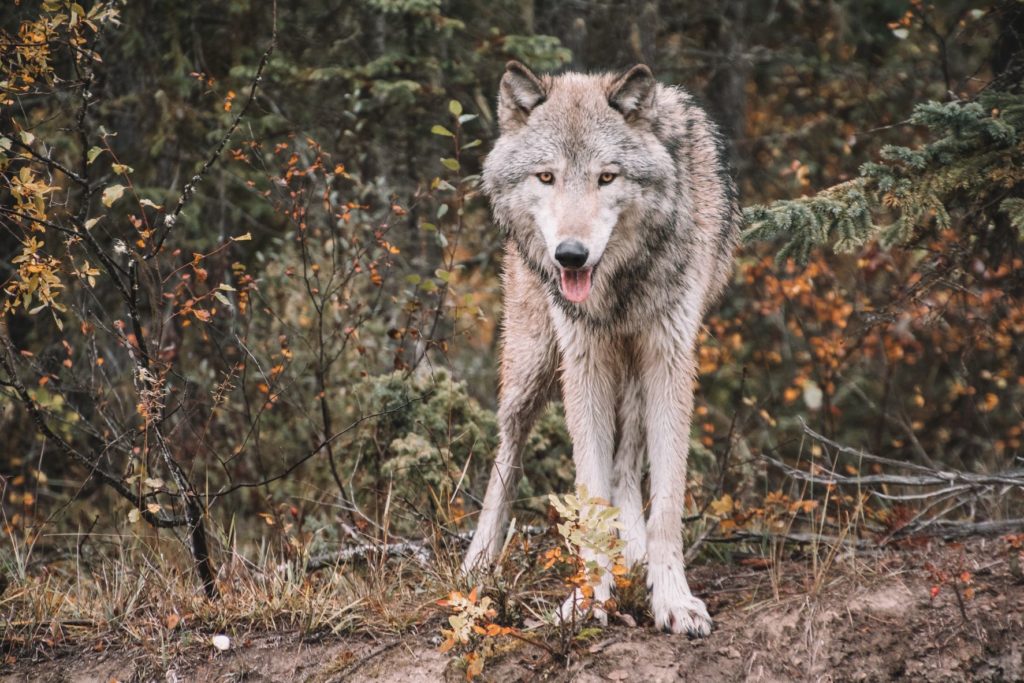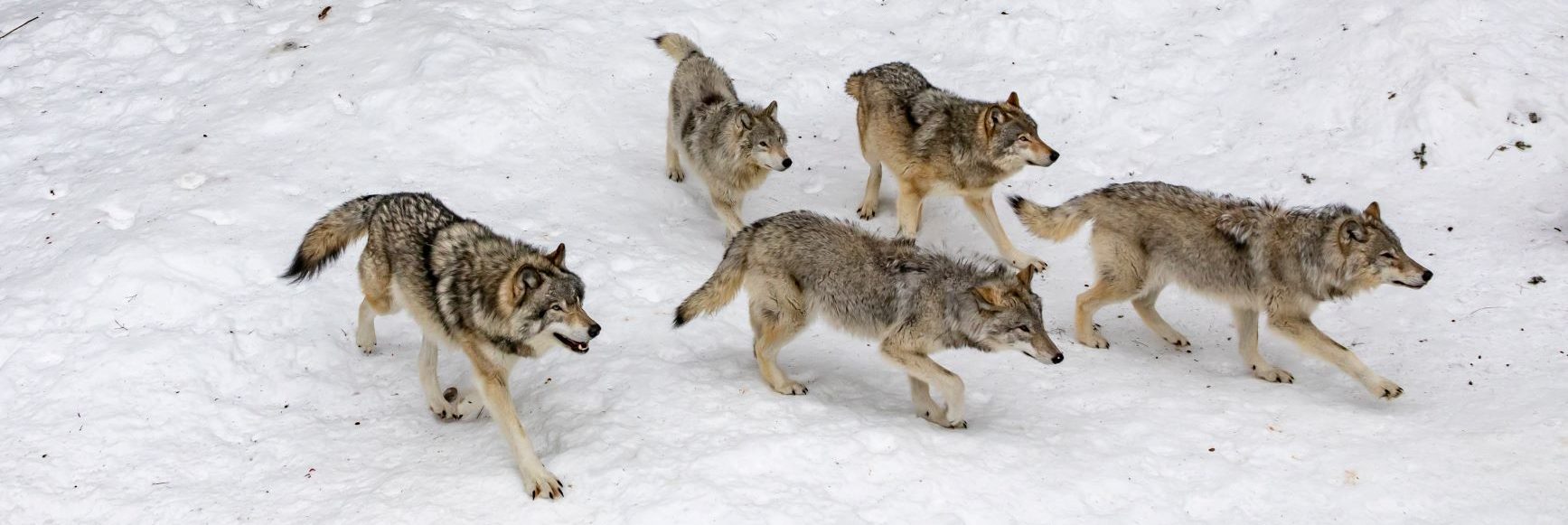Can we rewild the American West?
Written by Olivia Nater | Published: August 29, 2022
Rewilding, which involves removing human disturbances from areas and restoring their natural ecosystems, is gaining recognition as a key solution to our interlinked environmental crises. An ambitious new proposal by a team of scientists from several universities aims to rewild large parts of the American West to protect endangered species and fight climate change.
The proposal, detailed in this paper in the journal BioScience, lays out a plan to rewild federal land areas across the 11 Western states, which the authors call the Western Rewilding Network. They say their plan follows up on President Biden’s commitment to conserve 30% of U.S. land and water by 2030.
Bringing back the wild things
The proposal is based on reintroducing two keystone species that provide vital ecosystem functions, the gray wolf (Canis lupus) and the North American beaver (Castor canadensis). As apex predators, wolves play a key role in controlling herbivore populations, which helps restore native vegetation. Beavers create wetlands, which provide habitat for up to 70% of all wild species. The habitats formed by healthy beaver populations also improve water quality, provide drought and wildfire protection, and increase carbon sequestration, which are all becoming increasingly important due to climate change.

Both species were heavily hunted following colonization and have not had a chance to recover because many landowners and industries consider them nuisance animals — wolves sometimes prey on livestock, while beaver dams can cause flooding of wide areas. Wolves were largely eradicated from the American West. Despite small-scale reintroductions to portions of the northern Rocky Mountains in the mid-to-late 1990s, wolves’ current range in the 11 Western states is only 14% of its historical size, with local populations that once numbered in the tens of thousands reduced to approximately 3,500 today. Western beaver populations also suffered a massive reduction by an estimated 90-98% in the wake of the westward movement of European American colonists.
Cows not compatible with conservation and climate action
To identify suitable areas for reintroduction, the authors looked at areas of contiguous federally managed lands within core wolf habitat that span at least 5,000 square kilometers. The resulting potential network of 11 large reserves includes 92 threatened species that would benefit from greater protection. By far the most important threat identified within the network was livestock grazing, followed by mining, logging, and oil and gas development.
Despite its damaging impacts on native ecosystems, livestock grazing occurs all over federal lands in the American West, even within some protected areas. Cattle are also an important source of greenhouse gas emissions, especially methane. To reduce grazing impacts and as a rather necessary precursor to wolf reintroductions, the authors propose retiring livestock grazing allotments in the Western Rewilding Network. After the cows are removed and the wolves are established, the scientists argue that native vegetation will have recovered enough to introduce beavers as the third and final rewilding step.
Ambitious action required
As the plan represents an almost 30% reduction in grazing allotments on federal lands in the 11 Western states, the paper recommends “an economically and socially just federal compensation program for those who relinquish their government grazing permits.” The authors argue that their plan would yield net economic benefits, however, given carbon costs of grazing as well as land management costs significantly exceeding income from grazing fees, which currently benefit from generous subsidies. In addition, the lands in the proposed network account for only 2% of national meat production. To manage potential human-wildlife conflict associated with wolves and beavers moving out of the network, the authors recommend developing an action plan.

The proposal is unfortunately unlikely to appeal to the politicians running many of the states in question. Montana, Wyoming, and Idaho, which contain some of the most promising potential rewilding sites, are very hostile to wolves, with policies aimed at actively reducing already tiny wolf populations.
The paper states:
“Although our proposal may at first blush appear controversial or even quixotic, we believe that ultra ambitious action is required. We are in an unprecedented period of converging crises in the American West, including extended drought and water scarcity, extreme heat waves, massive fires triggered at least partly by climate change, and biodiversity loss with many threatened and endangered species.”
Making room for nature
Several of the authors of this paper were also behind the 2017 “World Scientists Warning to Humanity: A Second Notice,” as well as the 2019 and 2021 “World Scientists’ Warning of a Climate Emergency.” The warnings were signed by thousands of scientists from around the world and called for transformative action, including stabilizing “and gradually reducing” the global population by providing voluntary family planning and supporting girls’ education.
Ending population growth and scaling back destructive human activities such as overconsumption of meat and dairy are key to restoring native ecosystems, which itself is becoming an increasingly important solution to the climate crisis, resource depletion, and biodiversity loss. Let’s make room for nature and save ourselves.

